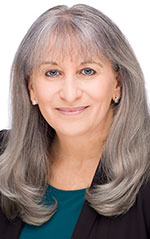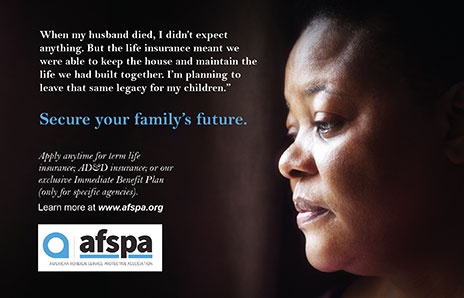MED’s Child & Family Program, Explained
Here is an authoritative account of the aims of the CFP, presented as part of the Journal’s ongoing discussion of concerns regarding support for children and families overseas.
BY KATHY GALLARDO
Raising children has never been easy, and this is especially true in the Foreign Service, where both unique challenges and exceptional rewards come with the territory. The Department of State’s Bureau of Medical Services (MED) knows that our parents, like all parents, worry that the decisions they make about their children may have long-term impact. Yet the Foreign Service lifestyle just seems to increase the stakes.
Would my child be better off in the United States? Isn’t exposure to other cultures and languages good for children? What do I do if a teacher raises concerns about my child’s learning style or social skills? Who do I talk to? What are the options? Caring for Foreign Service employees and their dependents overseas takes many forms for MED, including making sure children with behavioral health conditions and educational disabilities have access to important services they require.
MED’s Mental Health Services division has a primary role in the many clinical and administrative processes involved in support of this goal, a responsibility that dates back many years. However, the State Department’s emphasis on hiring over the previous decade and deliberate efforts to support significantly increased numbers of employees and dependents overseas have resulted in new challenges and opportunities for MHS.
Origins of the Child and Family Program
The MED/MHS Child and Family Program was created in 2013 to address the increasingly complex issues faced by many U.S. Foreign Service personnel with dependent children who require specialized educational and behavioral health services. CFP staff member core duties include:
- Case review for educational clearance recommendations to the Office of MED Clearances for school-age children of U.S. government personnel assigned overseas;
- Case review for mental health clearance recommendations for child and youth dependents of government employees assigned overseas;
- Intensive case management of the Special Needs Education Allowance program, involving eligibility determinations, annual renewals and verification of allowable expenses for qualified dependents;
- Consultation for pediatric and adolescent behavioral health medical evacuations for urgent assessment and treatment; and
- Clinical and administrative support to MED personnel overseas.
CFP is made up of a multidisciplinary team of child psychologists, social workers and child psychiatrists with experience in both clinical and educational systems to closely replicate the functions performed by members of a Child Study Team in a U.S. public school.
Prior to the creation of CFP, the programmatic functions of educational clearance recommendations and special needs funding and case management were performed by MED/MHS Employee Consultation Services clinical social workers; and mental health clearance consultations and medevac support were performed by MED/MHS clearance psychologists and psychiatrists.
In 2013, a combination of factors contributed to the impetus for reimagining MHS structure for supporting children and families. These included resource concerns due to an increased emphasis on traditional Employee Assistance Program work provided by ECS; a desire to streamline the clearance process for families; and a need to ensure consistent application of the SNEA-related Department of State Standard Regulations. Both MED and MHS leadership recognized the need to move toward a more uniform code of practice in supporting children and families.
As with any new program, there have been growing pains. After a reasonable start-up period, an internal assessment was undertaken to gauge the progress of the office in standardizing SNEA case management and servicing the special needs client population. In that vein, a number of endeavors by CFP stakeholders—including MED, the Office of Allowances, the Office of Overseas Schools, the Family Liaison Office and others—have been underway over the past year that are aimed at improving oversight, consistency and accountability of the educational allowance.
The Office of Allowances has been particularly instrumental in efforts to draft an updated informational SNEA ALDAC cable, to clarify Department of State Standardized Regulations and shepherd a number of other SNEA initiatives to assist all involved.
Both MED and MHS leadership recognized the need to move toward a more uniform code of practice in supporting children and families.
Two Key Processes
MED Clearances. The current MED clearance process for children and youth encompasses three domains: general medical, behavioral health and education. MED/MHS/CFP is responsible for providing clearance recommendations to the Office of MED Clearances for behavioral health and educational needs. When an employee submits a medical clearance update request for a child to the Office of MED Clearances, the office reviews the documentation for any behavioral health or educational needs and, where present, sends a request for a clearance consultation to MHS/CFP.
MHS/CFP staff then perform a case review as part of the medical clearance process and make a recommendation on what level of need a child has and to what extent the need or needs can be met overseas. Factors that are considered include the condition or disability, level and length of stability, the required treatment or intervention and whether adequate services can reasonably be accessed overseas, among other things.
“Post Approvals” are considered when a child has been categorized as needing a “post-specific” clearance and the employee’s Human Resources career development officer (CDO) submits potential postings to MED for review. Factors that may speed up the clearance process include submission of up-to-date medical and educational documentation, full disclosure of behavioral health and educational needs, and thorough research by parents into the adequacy of resources at posts of interest.
Educational clearances for children may be performed by the CFP with tentative school acceptances received by parents in order to assist an employee in the bidding process. However, an official school acceptance is required for children with special needs before they may travel to post. If official school acceptance is not received, it is the employee’s responsibility to notify their CDO and MED Clearances immediately.
Special Needs Education Allowance. Children. Education. Health care. Money. Individually, these topics often spark rich debate and emotion-laden discussion; in aggregate, the reaction can be incendiary. The Special Needs Education Allowance process pulls all of these together and has traditionally been the most confusing of the CFP responsibilities for parents, providers and post management.
Notwithstanding these challenges, the State Department is committed to assisting employees in meeting the necessary expenses incurred when deployed overseas in providing adequate education for their school-age children.
The education allowances are designed to assist in defraying those costs necessary to obtain educational services that are ordinarily provided free of charge by public schools in the United States. The goal is to replicate, as closely as possible for those posted overseas, the support that would be available to parents of children in a U.S. public school district using the best Washington, D.C., metropolitan school districts (e.g., Arlington, Falls Church, Fairfax and Montgomery counties) for guidance.
Under the DSSR, a child receiving SNEA must have written evidence that they meet the definition of a child with a disability under the Individuals with Disability Education Improvement Act, and there must be a formal Individualized Education Program (an “IEP”) or its equivalent, prepared by a professional medical or educational expert, that delineates which educational services are required to provide for the child’s special needs. All documentation should be provided to MED by the employee and is reviewed by CFP.
Finally, appreciating how the MED clearance process interfaces with SNEA is crucial to understanding the benefits and limitations of this educational allowance. The MED clearance process is the first step toward meeting a child’s needs overseas. A child is medically cleared for a post if the required services are available at that post, and the SNEA may then be used to offset extra costs for the required services which are not provided free by the school or covered by the employee’s medical insurance.
If, on medical clearance review, an employee or spouse has needs which cannot be met at certain overseas posts, MED will inform HR/CDA that the relevant clearance status is “post not approved.” Likewise, if a child’s medical, psychiatric or educational needs cannot be met at certain posts under consideration, the child will not be medically cleared for the post.
Collaboration
All CFP processes work best when there is a true partnership between parents, Foreign Service medical officers overseas and the various administrative components in the department positioned domestically and abroad.
Employees from the Office of Allowances, the Office of Overseas Schools and the Family Liaison Office work closely with MHS leadership and CFP personnel to assist families in understanding how educational opportunities, educational allowances (including SNEA) and local resources enable children with special needs to be posted successfully overseas.
Given the individualized requirements of IEPs and the IDIEA, CFP strongly encourages parents to contact its staff members and discuss germane elements of the processes for their child.
I encourage readers to visit http://med.m.state.sbu/mhs/cfp or www.state.gov/m/med/family/index.htm, where you will find a set of frequently asked questions with CFP’s responses.
Read More...
- “Supporting FS Families with Special Needs Children” by Maureen Danzot and Mark Evans (Speaking Out, The Foreign Service Journal, June 2016)
- “Mental Health Support for Foreign Service Children: Parents Weigh In” (The Foreign Service Journal, June 2016)
- “Spotlight on Mental Health Care” (FSJ Focus, January/February 2016)






